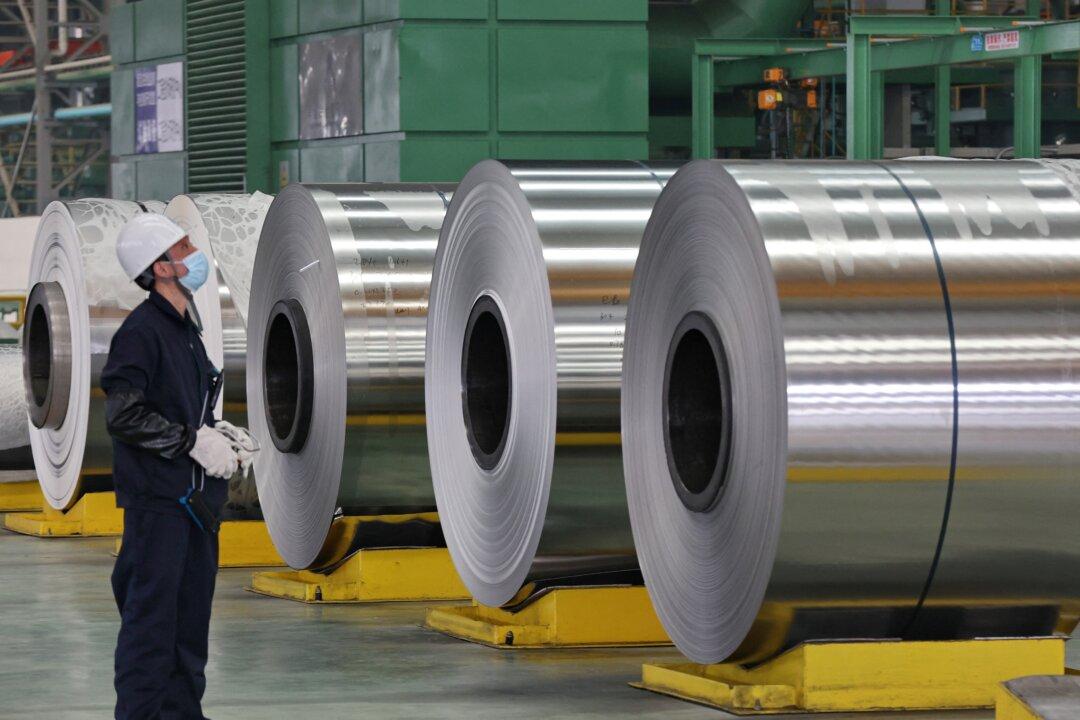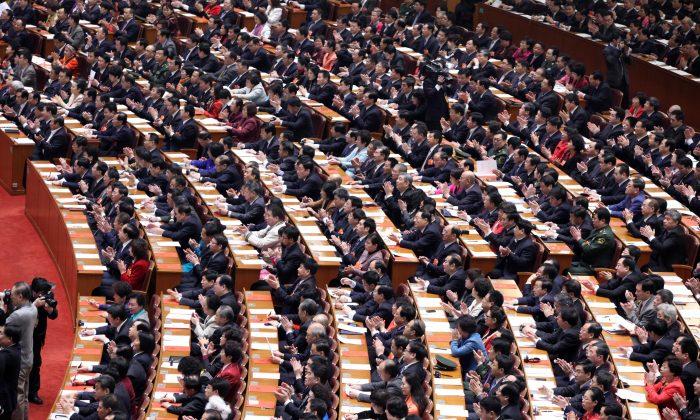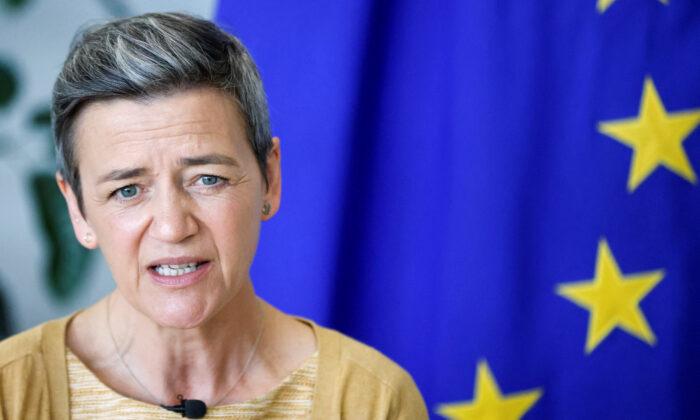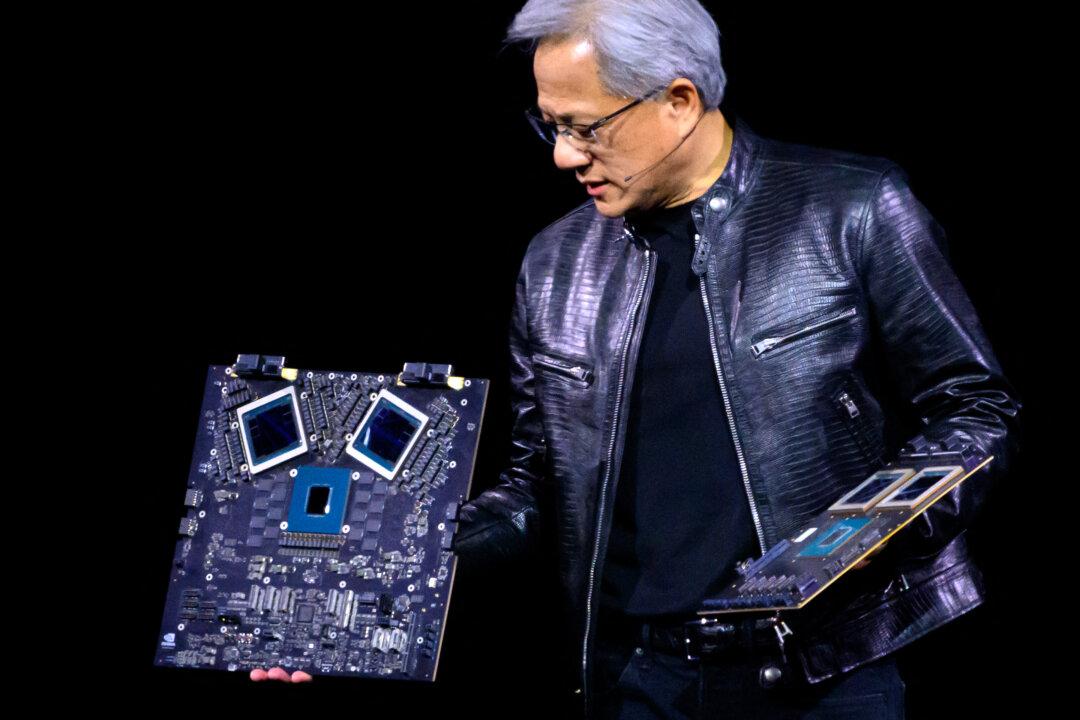In December 2021, China’s property giant Vanke said its employee of the year was not a human.
According to The Paper, a Chinese state-owned media, the company declared an artificial intelligence (AI)-powered debt collector named “Cui Xiaopan” as its employee of the year. The virtual employee was created by Vanke’s in-house team using the Xiaoice Framework, an AI system developed by Microsoft Asia.
At first glance, Cui is depicted as a beautiful young professional in her 20s who joined Vanke’s accounting department in February 2021 and is the recipient of the company’s Best Newcomer Award.
“Supported by systematic algorithms, [Cui] quickly learned the human methods in discovering problems in data and work procedures. The skills she displayed has proven to be hundreds of thousands of times more efficient than humans,” Yu Liang, chairman of the board of directors of Vanke, wrote in a social media post on Dec. 20, 2021, adding that Cui has a 91.44 percent success rate in collecting overdue payments.
AI-powered virtual humans have become a trending application in recent years, especially in the Chinese financial sector. Since 2019, at least three banks in China have unveiled their virtual employees.
AI-Powered Virtual Influencers
The market for virtual influencers is rapidly expanding in China. It is driven by the accelerated development of AI and rendering technologies. More and more influencers are becoming virtual to fit specific needs.On Oct. 31, 2021, Halloween, an AI-powered beauty blogger named “Liu Yexi” released her first video, according to Sohu, a Chinese state-owned media.
In the 2-minute video, Liu was putting on makeup in front of a mirror while dressed in a traditional Chinese outfit. The short film with a combination of suspense, plot, and post-production special effects became an instant hit on Douyin—the Chinese version of TikTok—attracting 2.3 million followers in just three days.
Since then, Liu’s Douyin account has uploaded over six videos, with more than 8.3 million fans and over 20 million likes.
Many companies look to leverage their artificial intelligence capabilities in the fast-growing metaverse field.
Notably, China’s first “meta-human” AYAYI made its debut on Chinese e-commerce platform Xiaohongshuin in May 2021. The hyper-realistic digital human garnered three million views on its first post and 40,000 followers overnight, according to Dao Insights, a Chinese digital news publication.
Different from past virtual idols in China, AYAYI’s appearance is much closer to an actual human in terms of look and feel. Reportedly many Xiaohongshu users were torn over whether it was real or another AI-created human. The company later came out with a statement introducing her as the country’s first meta-human, according to That’s Beijing magazine.
As a fashion influencer, AYAYI has entered marketing partnerships with many brands including Porsche, who is also an investor in the technology. AYAYI has also reportedly become Alibaba’s digital ambassador. The company said it would jointly build the future of the Metaverse with AYAYI and create a new world of marketing.
In addition to virtual employees and influencers, Beijing’s Tsinghua University had also unveiled its first AI-powered virtual student named “Hua Zhibing” in June 2021, according to the Chinese state-run Global Times.
AI and rendering technologies have become so sophisticated in recent years that some AIs are almost indistinguishable from real humans.
AI Risks and Social Issues
A director of the Shenzhen Institute of Advanced Technology, Song Zhan, told the Chinese state-run Xinhua News that developing virtual humans might bring new ethical and social issues.Song called on the public to be vigilant about fake avatars and online characters created by AI. He warned that people might be overly immersed in the virtual world and become reliant or even seek emotional support from fake characters, leading to widespread social issues.
An IT professional, Zhang Jian, told The Epoch Times that AI technologies appeared to be advancing in an unstoppable trend. Web 3.0 (internet of the future), virtual reality (VR), and the Metaverse—“if these three elements were to combine, the future world would be completely unimaginable for us,” Zhang said. “The way we are heading, no one knows if there will be a place for humans in the future.”
Controlling the Future
AI was initially an idea to mimic and augment human intelligence. However, AI technologies today are rapidly proliferating around the world. They are replacing humans in manufacturing, service delivery, recruitment, communications, the military, the financial industry, and other sectors, generating enormous financial interests, according to the Harvard Business Review.According to a 2019 report compiled by Deloitte, a global professional services network, experts predict that using AI at a larger scale will add as much as $15.7 trillion to the global economy by 2030.
“When one party’s drones are destroyed by drones of another, it will have no other choice but to surrender,” Putin added, predicting that future wars will be fought by drones.
That same year, the Chinese Communist Party (CCP) incorporated the AI developments into its national strategy and set goals to become the global leader by 2030.
US Remains a Major Investor in China’s AI Development
China’s great leap forward in artificial intelligence is driven by large-scale capital. However, despite the emerging threat, Wall Street remains the largest investor in the Chinese AI industry, according to Hong Kong finance and economics columnist Alexander Liao.Almost all large tech companies in mainland China are supported by American capital. For example, Chinese tech giants Baidu, Tencent, Alibaba, and ByteDance—the parent company of TikTok—have been publicly listed and heavily invested in by Wall Street over the years. In turn, these Chinese tech giants invest heavily in China’s domestic tech companies, including Chinese AI startups.
Wall Street’s direct investment and venture capital have brought its high-tech business incubation mechanism to Mainland China, helping China create high-tech industries that compete with the United States. And yet, it is the CCP that controls these industries.
CCP’s Strategic Priority
The CCP has prioritized AI development in recent years, making it a “key national development strategy.” It has mandated AI into many aspects of ordinary life, not only to surveil and control its people but also to use its massive population to spur development.To bolster the rapid development of AI, the CCP has issued a number of supporting policies and regulations, including its “Made in China 2025” and “13th Five-Year Plan.”
In 2017, China’s State Council issued the “New Generation Artificial Intelligence Development Plan,” emphasizing the significance of AI in helping the government understand and control society.
“Artificial intelligence technology can accurately perceive, predict, and early-warn the major trends of society. [It can] grasp people’s cognition and psychological changes and proactively decide the responses. [This technology] will significantly improve the ability and level of social governance. It is irreplaceable for effectively maintaining social stability,” according to the plan.
“It will have a profound impact on government management, economic security, social stability, and global governance.”
Liao said the CCP believes the emerging technology revolution—artificial intelligence—can bring new life to the authoritarian system, which was on the verge of collapse.





